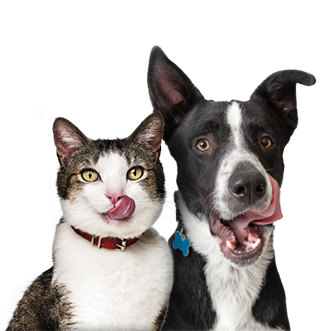
-
Find the right food for your petTake this quiz to see which food may be the best for your furry friend.Find the right food for your petTake this quiz to see which food may be the best for your furry friend.Featured products
 Mature Adult Dog Food
Mature Adult Dog FoodHill's Science Plan Mature Adult Multipack Wet Dog Food with Chicken & Beef are complete premium pet foods for mature adult dogs from 7 years. Your dog will love these deliciously smooth and savoury minced loaves, formulated to deliver the appropriate amount of energy to support the needs of adult dogs.
Shop Now Adult Wet Dog Food with Beef
Adult Wet Dog Food with BeefHill's Science Plan Adult Multipack Wet Dog Food with Chicken, Beef & Turkey are complete premium pet foods for adult dogs from 1 year. Your dog will love these deliciously smooth and savoury minced loaves, formulated for balanced nutrition and overall health.
Shop Now Puppy Food
Puppy FoodHill's Science Plan Puppy Multipack Wet Dog Food with Chicken & Beef are complete premium pet foods for growing puppies from weaning until 1 year old and for pregnant and nursing dogs. Your puppy will love these deliciously smooth and savoury minced loaves, formulated for balanced nutrition and overall health.
Shop NowFeatured products Adult Multipack Wet Cat Food with Beef, Ocean Fish & Chicken
Adult Multipack Wet Cat Food with Beef, Ocean Fish & ChickenTender chunks in gravy for cats, with high-quality protein to maintain lean muscle. With vitamin E and omega-3s & -6s for healthy skin and balanced minerals to support healthy vital organs.
Shop Now Light Adult Multipack Wet Cat Food with Chicken & Ocean Fish
Light Adult Multipack Wet Cat Food with Chicken & Ocean FishTender chicken chunks in gravy for cats, with L-carnitine and fewer calories for ideal weight management. Packed with high-quality protein, omega-6s, and vitamin E for shiny fur and healthy skin.
Shop Now Mature Adult Wet Cat Food with Chicken
Mature Adult Wet Cat Food with Chicken
Tender chicken chunks in gravy for mature adult cats. Made with easy-to-digest ingredients, high-quality protein for lean muscle maintenance and antioxidant vitamins C+E for optimal health.
Shop Now -
Dog
- Dog Tips & Articles
-
Health Category
- Weight
- Food & Environmental Sensitivities
- Urinary
- Digestive
- Joint
- Kidney
-
Life Stage
- Puppy Nutrition
- Adult Nutrition
- Senior Nutrition
Cat- Cat Tips & Articles
-
Health Category
- Weight
- Skin & Food Sensitivities
- Urinary
- Digestive
- Kidney
-
Life Stage
- Kitten Nutrition
- Adult Nutrition
Featured articles Show some love with wet foods: a great choice for pets with health issues
Show some love with wet foods: a great choice for pets with health issuesShow some love with wet foods: a great choice for pets with health issues.
Read More The Incredible Science Behind Your Pet's Microbiome
The Incredible Science Behind Your Pet's MicrobiomeLearn what your pet's microbiome is, how it contributes to your pet's gut and overall health, and why nutrition is important in maintaining healthy microbiomes.
Read More The Right Diet For Your Pet
The Right Diet For Your PetIn people, the right diet is very important. If you are eating the wrong way for your metabolism, activity level, age and lifestyle you could end up with health issues.
Read More -


Lots of owners worry about their cat or dog being too thin or too fat and it’s wise to keep track of it. Gaining and losing weight could be a sign of a disease like a thyroid problem or diabetes. As vets we recommend that animals are weighed monthly if possible throughout their lives. This way, as an owner or a vet, you can very quickly spot if their weight is going wrong in either direction. Weight gain could just be a mismatch of calories like ‘middle-age spread’ but could be a sign of disease. Weight loss without a reason is sometimes a more worrying sign. In this article we will be looking at thyroid disease - the signs, the causes and what you can do about it.
The thyroid gland controls our metabolism - too much (hyper-) and our bodies are in overdrive, too little (hypo-) and we become sluggish, tired and tend to gain weight. Cats and dogs are exact opposites when it comes to their thyroids. When there is thyroid disease, cats are virtually always hyperthyroid and dogs, virtually always hypothyroid.
Hyperthyroidism in cats.
An overactive thyroid gland, or hyperthyroidism, is a common endocrine disease in cats. It’s usually caused by a benign growth of thyroid tissue that produces extra thyroid hormone. It often affects older cats and one of the major signs is uncontrolled weight loss. Because the metabolism gets put into overdrive you see fairly clear signs of this besides the weight change. Hyperthyroid cats are hungry all the time, they beg for food and steal food because they simply can’t satisfy their appetite. They tend to be on the go all the time, pacing and restless as if they don't know what to do with themselves and can even become aggressive. Their coat often looks messy and unkempt. When they have a vet check we usually find that their heart rate is very high and often their blood pressure is up. Careful veterinary examination often reveals an enlarged thyroid gland in their neck. The signs are pretty classic but a blood test measuring levels of thyroid hormone is used to confirm it.


Tasty Tips
Young pets may need several visits in their first year for vaccinations. Adult pets generally benefit from annual check-ups, while senior or special-needs pets might require more frequent visits.
Treatment of hyperthyroidism.
There are actually several ways to treat hyperthyroidism in cats. This will depend on where you live, your circumstances and what your vet has available. The options are;
- Medication. Depending on where you live this could be tablets or a gel/cream that you rub on the skin.
- Radioactive iodine. Only certain centres are approved to do this and your cat will need to be hospitalised for a period of time after the treatment.
- Food. There is a dietetic food available that can help control hyperthyroidism, possibly even without the need for medication or hospitalisation. The thyroid gland needs iodine to make thyroid hormone. This food has iodine levels that are low enough to stop the overproduction of the hormone while allowing normal amounts to be made.
- Surgery. One or both glands is surgically removed.
There are pros and cons to all these options so make sure you discuss them with your vet.
Hypothyroidism in dogs.
As you can guess, in dogs, hypothyroidism is pretty much the opposite of this. It is usually caused by an immune problem that attacks the gland and stops it being able to produce hormones. It mostly affects middle-aged to older dogs. The metabolism slows, the dog becomes lethargic and lazy and often gains weight even if their ration hasn’t increased. They may also seem depressed or down in the dumps. Another telltale sign is called ‘rat-tail’. Dogs tend to get a poor coat condition and lose fur, especially on the tail, making it look like a rat’s hairless tail.
Hypothyroidism has no cure as yet and is treated with life-long, daily medication with substitute thyroid hormone. It takes a little while to get the dosage and levels just right and will need regular blood tests to make sure it’s not too high or low but usually the dogs do really well and bounce back to their normal selves.
You may wonder if you need to bother treating a thyroid problem at all and the answer is yes. Hyperthyroidism is actually dangerous and can cause blindness, kidney failure and emaciation to name just a few things. Having been hyperthyroid myself for a time I can tell you it’s very unpleasant indeed. While an underactive gland isn’t as dangerous, your dog will still feel pretty low and lethargic and will definitely benefit from getting the spring back in his or her stride.


One of our staff authors prepared this article for you
Related products

Tender chunks in gravy for cats, with high-quality protein to maintain lean muscle. With vitamin E and omega-3s & -6s for healthy skin and balanced minerals to support healthy vital organs.

Tender chicken chunks in gravy for cats, with L-carnitine and fewer calories for ideal weight management. Packed with high-quality protein, omega-6s, and vitamin E for shiny fur and healthy skin.


Tender chicken chunks in gravy for mature adult cats. Made with easy-to-digest ingredients, high-quality protein for lean muscle maintenance and antioxidant vitamins C+E for optimal health.
Related articles

Show some love with wet foods: a great choice for pets with health issues.

To make a protein, amino acids are linked together in a long chain. The chain is then bundled into to a three-dimensional structure, like a tangled ball of yarn.

Learn what your pet's microbiome is, how it contributes to your pet's gut and overall health, and why nutrition is important in maintaining healthy microbiomes.

In people, the right diet is very important. If you are eating the wrong way for your metabolism, activity level, age and lifestyle you could end up with health issues.

Put your pet on a diet without them knowing
Our low calorie formula helps you control your pet's weight. It's packed with high-quality protein for building lean muscles, and made with purposeful ingredients for a flavourful, nutritious meal. Clinically proven antioxidants, Vitamin C+E, help promote a healthy immune system.
Put your pet on a diet without them knowing
Our low calorie formula helps you control your pet's weight. It's packed with high-quality protein for building lean muscles, and made with purposeful ingredients for a flavourful, nutritious meal. Clinically proven antioxidants, Vitamin C+E, help promote a healthy immune system.

